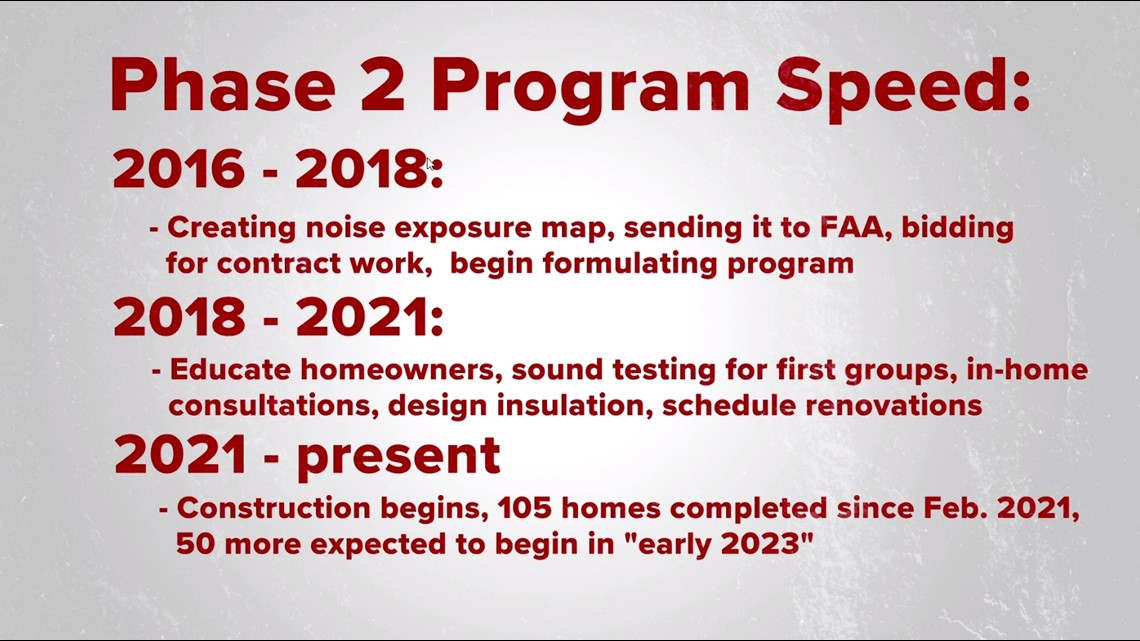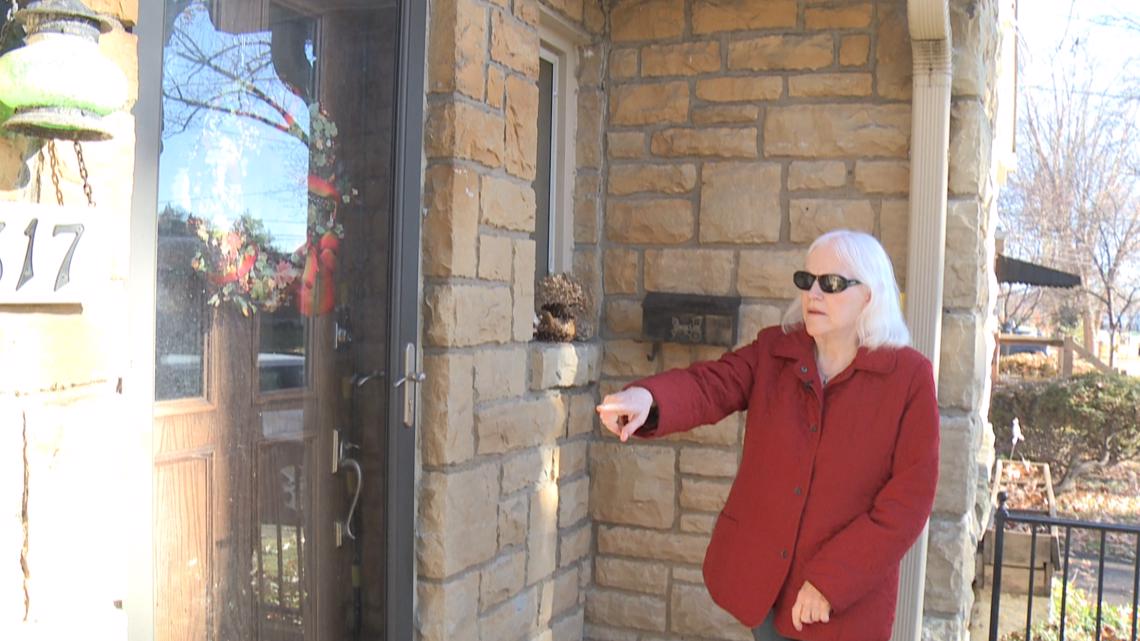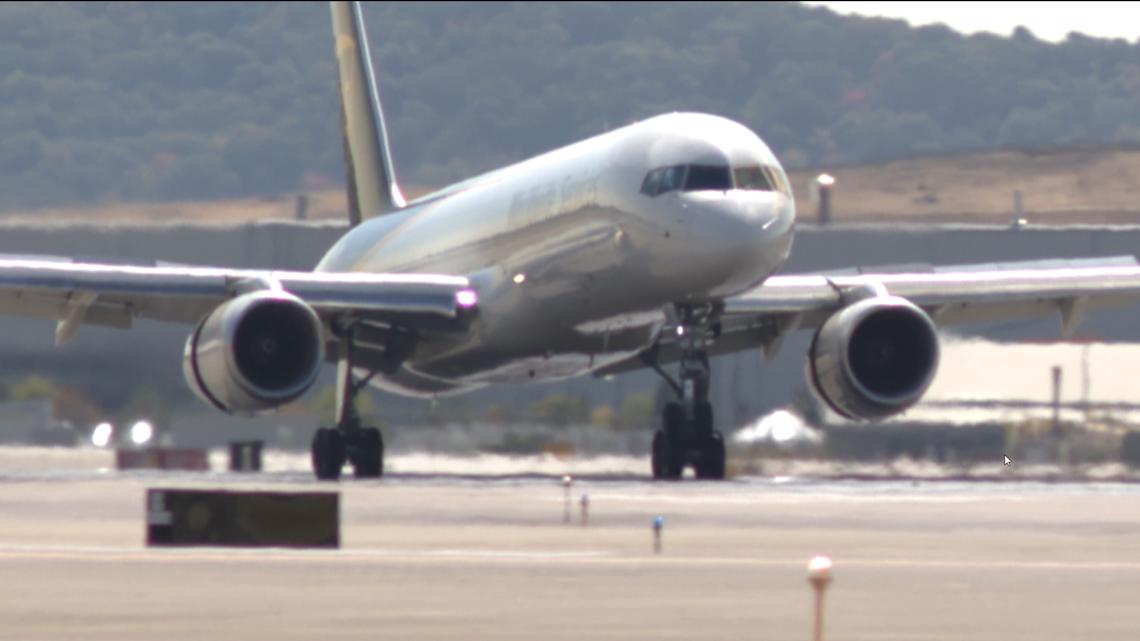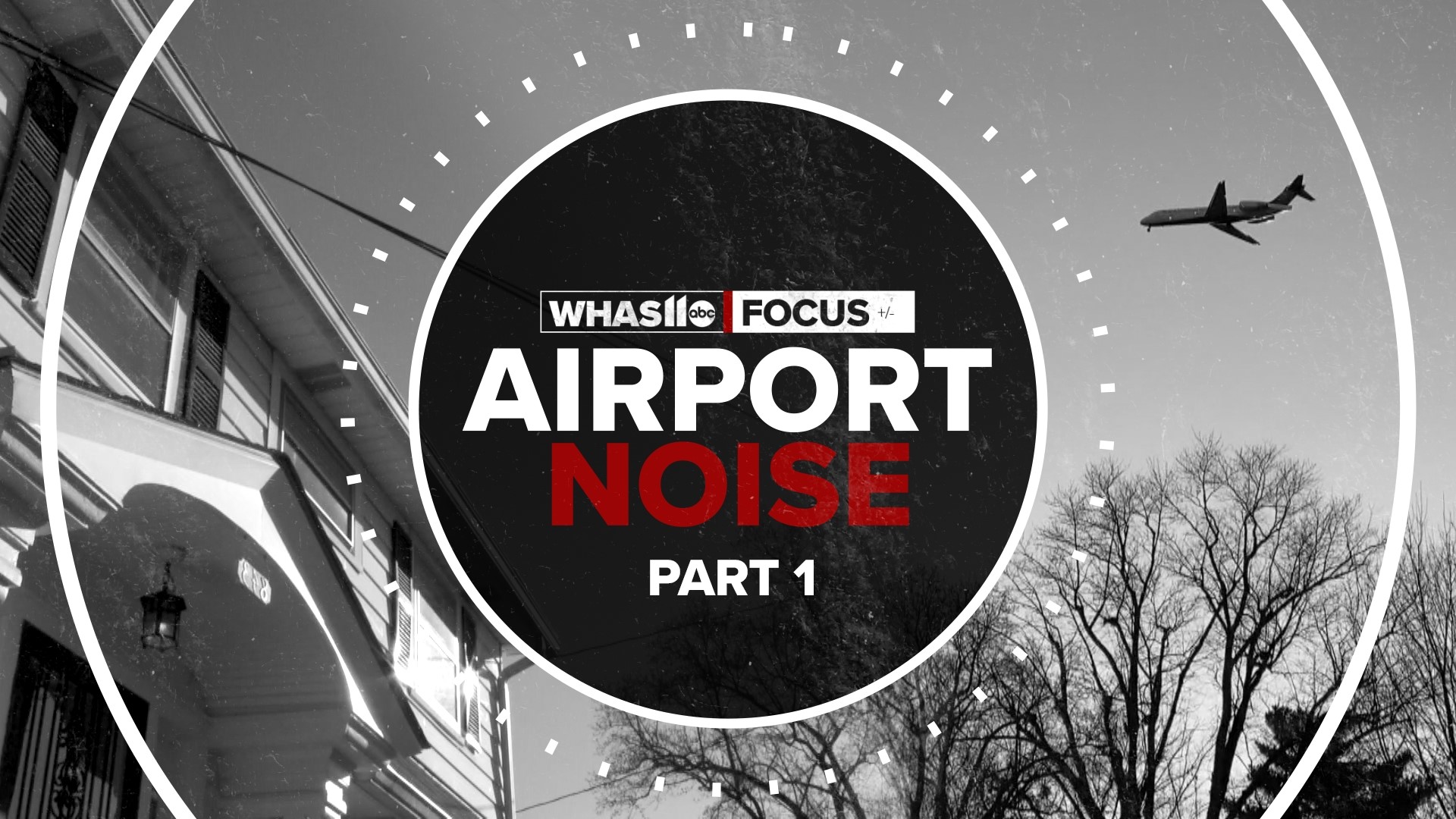FOCUS: Residents near Louisville airport wait years for federal noise insulation
Muhammad Ali International has helped 647 homes get noise insulation since 2010, but thousands more are either ineligible or waiting for their turn.

From the outside, Louisville's Schnitzelburg, Audubon neighborhoods and the city of Parkway Village seem like quiet areas to live.
Sheri Ferguson, who lives on the east edge of Parkway Village, said she didn't think about that when she first moved into the neighborhood, "a lot of people don't."
Walk through Parkway Village on a nice afternoon and you're bound to see people walking their dogs or pushing their grandkids in strollers.
But if you stick around for a half hour, you're bound to see, and hear, airplanes.
"Those Army helicopters fly so low that it vibrates the house," Ferguson said.


Ferguson's house is about three blocks away from being directly under the flight path of the Louisville Muhammad Ali International Airport.
Because of the UPS Worldport, the airport is the fifth busiest cargo airport in the world. According to Ferguson and many others, weeknights between the hours of 11 p.m. and 6 a.m. are the worst.
"At least twice a week I get woken up at 3 a.m.," she said.
Quieter homes Mitigating noise annoyance
The Federal Aviation Administration (FAA) and Louisville Regional Airport Authority (LRAA) realize the noise is an issue.
To mitigate residents' annoyance and irritation, the federal government allows local airports to organize and oversee sound insulation programs.
Over 275 airports in the U.S. have a program. In Louisville, it's called the QuieterHome Program.
The program has provided varying levels of sound insulation northeast of the airport, along Preston Highway, over the last 12 years.


The LRAA has to apply to the FAA any time it wants to look at insulating a new neighborhood. It is a process that takes years to get underway.
Phase 1 of the program was done between 2010 and 2015, during that phase 542 Louisvillians received sound insulation.
Ferguson's home was deemed eligible for sound installation in 2018, however she and some of her neighbors may not have it completed until 2025, according to LRRA Executive Director Dan Mann.
"'Do you not have enough people?' I was trying to understand why it hadn't happened here yet," Ferguson said of her conversations with the airport board.
Why the process takes so long 'We have to follow the rules.'
The process starts when the LRAA creates a noise exposure map, which calculates how much airport noise a home experiences in a day.
It takes into account the frequency of planes, how low they fly, how much fuel they're carrying and more.
Planes between 10 p.m. and 7 a.m. are weighted 10 decibels higher.
The result is a map with several "contours" on it. The contours are measured in day/night level, or "DNL."
The most recent noise exposure map was completed in 2016, however it took another two years to begin formulating Phase 2 of the QuieterHomes program.
LRAA spokesperson Natalie Chaudoin said after the map was completed, it was sent to the FAA. The agency determined it to be in compliance in late 2017.
"In January 2018, the LRAA began the process to advertise for a consultant for this work with the LRAA Board awarding a contract in March 2018," she said, adding program development began after the contract was signed in April 2018.
As for how long that process has taken, Mann says "we have to follow the rules...that's where the funding comes from. It's [the FAA's] program, we administrate it."
The program is 90% funded by the FAA and 10% funded by the LRAA. By the time Phase 2 of the program is completed, it will have cost roughly $50 million.
According to officials, the work on each home in Phase 2 is being valued at $57,000.
Starting in 2018, the LRAA began scheduling homeowner workshops to educate people and working with its contracting partner, C&S, to schedule noise testing, in-home consultations and schedule the actual renovations.


Since Phase 2 construction began in February 2021, 105 homes have been completed. A total of 549 have been identified to be tested over the next few years.
Chaudoin said the program's second phase is not moving at the pace officials would like it to. The airport tries to insulate 90 homes per year, however, the current pace is around 55 homes.
"We expect to be on a more normal pace in 2023 with anticipated improvements in supply chain issues, plus we believe work on an additional 50+ homes will begin early in the new year," she said. "Keep in mind, the 90 homes is a goal used for budget and planning purposes."
A waiting game 'I wish everyone could get the program tomorrow.'
Homes in the zones identified by the QuieterHomes program have to be tested to see if there is enough interior noise to qualify. The FAA standard is 45 decibels or more inside to qualify.
In Phase 1, 89% of homes tested qualified for the sound insulation.
"Whatever they do, it's not going to completely get rid of the noise, but it certainly would help," Ferguson said.
Parkway Village's city commissioner, and former mayor, Mary Rose Evans represented residents on the LRAA board for 20 years.
“I wish everyone could get the program tomorrow," she said. "It doesn’t work that way. We have to wait for federal dollars to come in."


Evans knows the program does not move at the pace people want it to, but she feels they have done everything in their power to make it effective.
“A lot of the people who are still waiting are my constituents. I feel very proud that they are actually in the program. We worked very hard to extend the guidelines –the borders– to include the rest of Parkway Village," Evans said.
The FAA has changed the level of sound insulation it covers over the years. In the first phase, people were getting new air conditioners, furnaces, and some were getting physical insulation in their walls or roof.
Evans says she got insulation in her roof and new HVAC systems, although she has had to replace her AC in the seven years since installation.
In 2019, the FAA changed its guidance to clarify that homes are not eligible to get HVAC systems replaced, but homeowners can get an AC unit added if they did not previously have one, according to an FAA spokesperson.
Homes in Phase 2 are mostly getting double-paned windows and storm doors with reinforced glass, but the residents FOCUS spoke with said it will make a big difference.
Legislators step in 'There has to be a balance.'
Lawmakers in Frankfort are trying to cook up a solution for people near the airport, so they don't have to wait years for the LRAA to get to their home.
In the 2022 legislative session, Rep. Jeff Donohue, D-Louisville, introduced House Bill 109, which would allow people living within the 60 DNL range to get a tax rebate of up to $5,000 to do noise insulation work on their own.
No action was taken on the bill and Donohue was voted out of office in November. However, new legislators like Rep. Josie Raymond, D-Louisville, have expressed interest in introducing the bill in the upcoming session.


"Folks have made investments in their homes and they're deserving of this," Donohue said. "The UPS expansion was wonderful, and it's really helped the city of Louisville, but there has to be a balance."
While this insulation is free to the homeowner, they do have sign a contract called an "avigation easement." The easement details the conditions of the noise insulation and says what the homeowner is giving up.
One condition is that the homeowner agrees not to sue the airport authority for any issues related to airplanes flying over their property.


